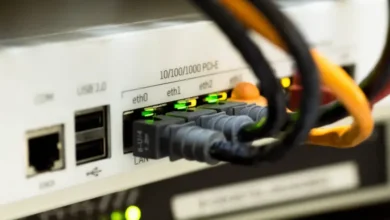The Surprising Dangers of Clicking on Unsecured Links visiting unsecured web
The internet has become an indispensable aspect of our everyday routine in this technology-driven age, serving as a gateway to an endless source of data and enabling interactions with individuals worldwide. Nonetheless, this connectivity also exposes us to potential cyber hazards, with unsecured links posing one of the most common and detrimental threats. This article will explore the perils of visiting unsecured websites and offer valuable tips to protect yourself from these possible online hazards.
What are Unsecured Links?
Hyperlinks that are not encrypted properly are known as unsecured links. These are vulnerable to hacking attempts by cybercriminals. Once clicked, they can redirect you to sites that pose severe online privacy and security risks. Unsecured links can disguise themselves in various formats, including emails, social media posts, or search engine results, and may seem harmless. Therefore, it is crucial to exercise caution while handling them.
The Dangers of Clicking on Unsecured Links
Clicking on an unsecured link can have several consequences, including:
- Malware Infection: Clicking on an unsecured link can expose your device to malware infections that can jeopardize both your device and personal data. Malware can pilfer vital information such as passwords, banking particulars, and even your identity.
- Phishing Attacks: Unsecured links may redirect you to deceptive websites that replicate genuine ones like your banking or email service provider. These deceitful sites dupe you into giving away your login credentials or other confidential details which hackers can later use to conduct theft.
- Ransomware: Certain unsecured links can lead to ransomware attacks that can impair your device’s functionality or encrypt your files. With ransomware, the attacker holds your device or information hostage and demands payment to grant access back to you.
- Compromised Network Security: Clicking on unsecured links while connected to a network, be it your home or office network, can put the whole network at risk by compromising its security. This leaves the network vulnerable to cyberattacks.
How to Protect Yourself
Fortunately, there are steps you can take to protect yourself from the dangers of unsecured links:
- Check the URL: It is wise to verify the legitimacy of any link before clicking on it by looking at the URL. Look for discrepancies like typos and variations in the spelling of the web address. Additionally, check for the “https” prefix in the URL, signalling that the website is equipped with an SSL certificate.
- Use a Link Scanner: A link scanner can help evaluate a link’s safety before accessing it. It scans the links for any suspicious behaviour and tells you whether it is secure to click or not. There are myriad free online link scanners accessible that you can avail of.
- Keep Your Software Updated: Ensure to keep your device’s software well-updated, including the browser and antivirus software. By doing so, you safeguard yourself against known vulnerabilities and exploits.
- Use a Virtual Private Network (VPN): The use of VPNs can encrypt your internet connection, thereby safeguarding your online activities from prying eyes of malevolent hackers and other cyber perpetrators.
- Malvertising: Visiting unsecured links may also redirect you to websites that exhibit harmful ads or pop-ups, known as malvertising. These ads can either infect your device with malware or redirect you to phishing sites.
- Identity Theft: Clicking on unsecured links can also result in identity theft, where cybercriminals pilfer your personal data, like social security numbers, addresses, or names. Subsequently, this data can be misused by the criminals to create unauthorized accounts or execute fraudulent purchases.
- Use Ad Blockers: Incorporating ad blockers can reduce the chances of malvertising and pop-ups from cluttering your screen. Eliminating these ads can reduce the risk of malware infections significantly.
- Be Cautious with Personal Information: When entering sensitive information online, exercise caution, especially when browsing unfamiliar websites. Always look out for an “https” prefix in the website’s URL, which guarantees the presence of an SSL certificate before divulging any personal details.
Conclusion
Clicking on unsecured links can prompt grave consequences like network security breaches and system-wide malware infections. Nonetheless, by deploying the aforementioned preventive measures, you can safeguard yourself and your sensitive information against the perils of browsing unsecured sites. It is vital to remain vigilant and cautious when interacting with online links and prioritize digital security. Remember to preemptively fortify your web activities instead of grappling with their aftermath. Hence, investing time and energy in securing your online footprint is an investment in your overall well-being.




